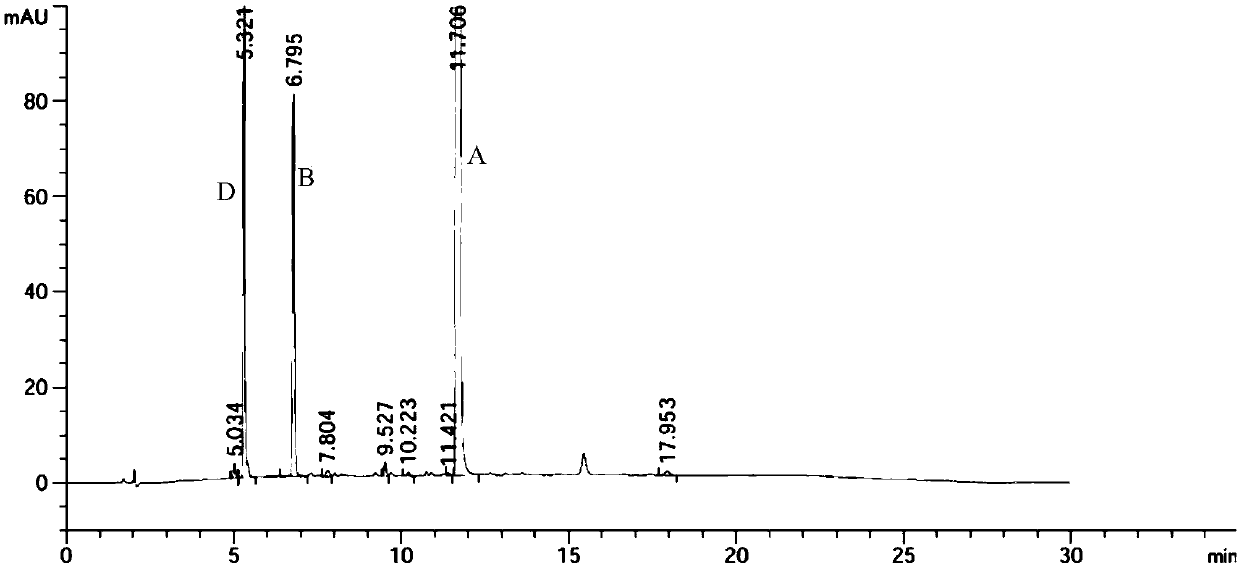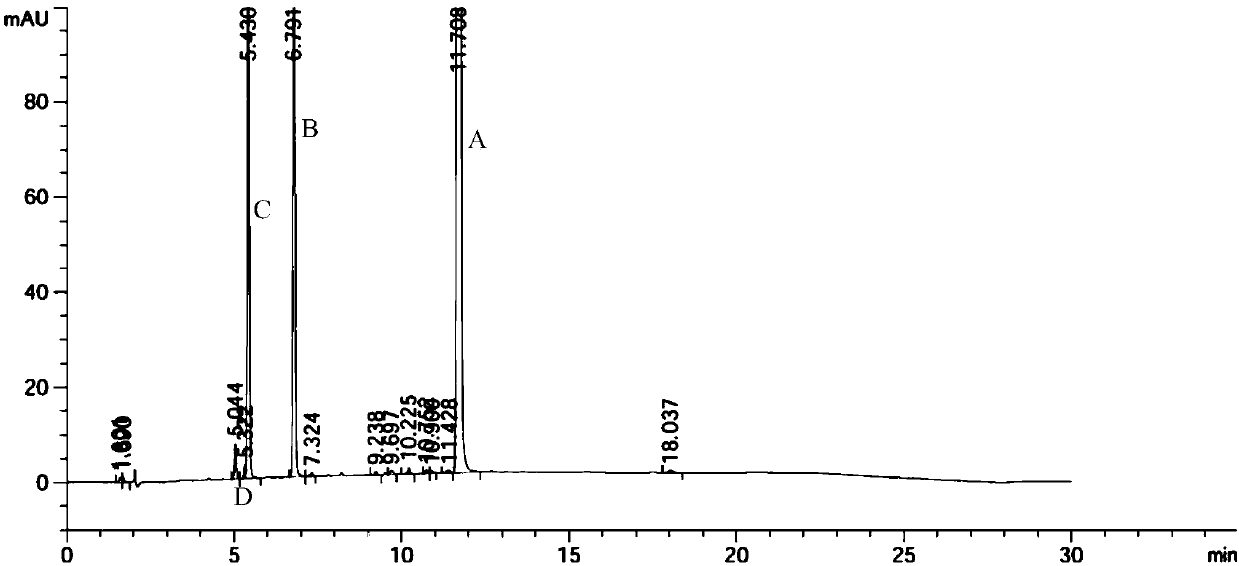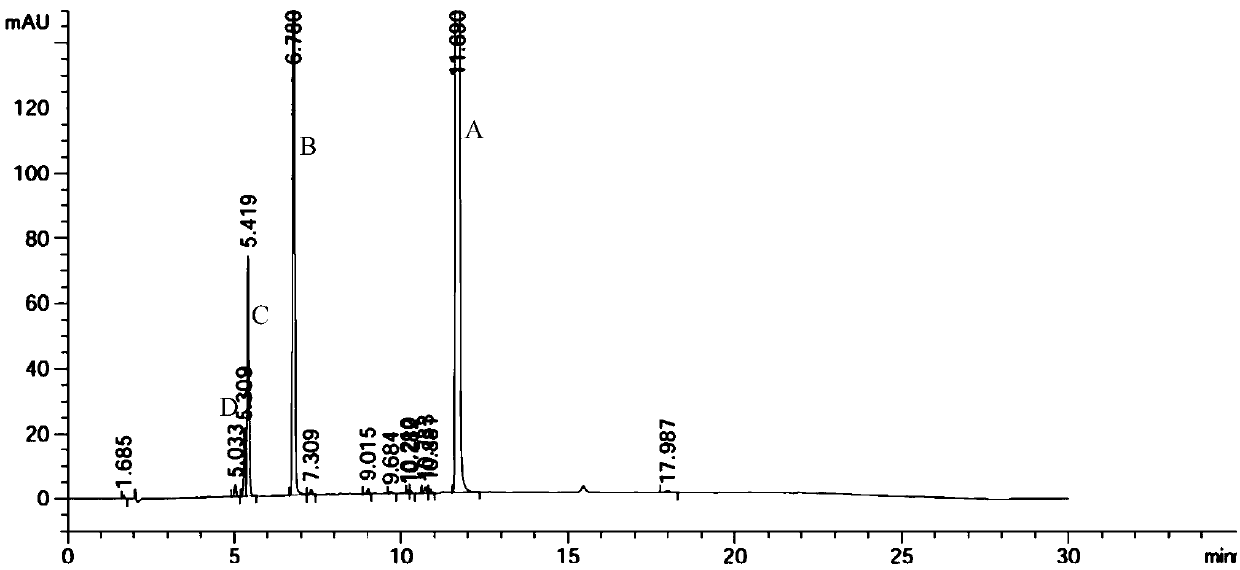Synthesis method of 3-n-butyl-1-(3H)-isobenzofuranone
A technology of furanone and isobenzene, applied in the field of medicine, can solve problems such as tedious, unsuitable for industrial production, and complicated
- Summary
- Abstract
- Description
- Claims
- Application Information
AI Technical Summary
Problems solved by technology
Method used
Image
Examples
Embodiment 1
[0044] Example 1: Synthesis of 3-n-butyl-1 (3H)-isobenzofuranone (without additive)
[0045] O-formylbenzoic acid (5.00 g, 33.3 mmol) was dissolved in tetrahydrofuran (20.0 mL) to obtain a tetrahydrofuran solution of o-formylbenzoic acid. Add 2mol / L tetrahydrofuran solution of n-butylmagnesium chloride (36.6ml, 73.3mmol) into a 250mL three-necked flask. After cooling down to -10°C, add the tetrahydrofuran solution of o-formylbenzoic acid dropwise into the tetrahydrofuran solution of n-butylmagnesium chloride, and control the internal temperature at -10-10°C. After dropping, the reaction was continued at 25° C. until the end of the reaction monitored by HPLC. Adjust the pH to 2-3 with 4 mol / L hydrochloric acid, separate the layers, extract the aqueous layer with ethyl acetate (50 mL×2), combine the organic phases, and wash with saturated brine (100 mL). After the organic phase was concentrated, 6.23 g of 3-n-butyl-l(3H)-isobenzofuranone was obtained. The HPLC purity is 87.2%...
Embodiment 2
[0046] Example 2: Synthesis of 3-n-butyl-1(3H)-isobenzofuranone (addition of Lewis acid)
[0047] O-formylbenzoic acid (5.00 g, 33.3 mmol) was dissolved in tetrahydrofuran (20.0 mL) to obtain a tetrahydrofuran solution of o-formylbenzoic acid. Add 2mol / L tetrahydrofuran solution of n-butylmagnesium chloride (36.6ml, 73.3mmol) and 0.65g Lewis acid into a 250mL three-necked flask. After cooling down to -10°C, add the tetrahydrofuran solution of o-formylbenzoic acid dropwise into the tetrahydrofuran solution of n-butylmagnesium chloride, and control the internal temperature at -10 to 10°C. After dropping, the reaction was continued at 25° C. until the end of the reaction monitored by HPLC. Adjust the pH to 2-3 with 4 mol / L hydrochloric acid, separate the layers, extract the aqueous layer with ethyl acetate (50 mL×2), combine the organic phases, and wash with saturated brine (100 mL). After concentration of the organic phase, 3-n-butyl-l(3H)-isobenzofuranone was obtained.
[00...
Embodiment 3
[0051] Example 3: Synthesis of 3-n-butyl-1 (3H)-isobenzofuranone (addition of CuI)
[0052] O-formylbenzoic acid (5.00 g, 33.3 mmol) was dissolved in tetrahydrofuran (25.0 mL) to obtain a tetrahydrofuran solution of o-formylbenzoic acid. Add 2mol / L tetrahydrofuran solution of n-butylmagnesium bromide (36.6ml, 73.3mmol) and 0.65g CuI into a 250mL three-necked flask. After cooling down to 0°C, add the tetrahydrofuran solution of o-formylbenzoic acid dropwise into the tetrahydrofuran solution of n-butylmagnesium bromide, and control the internal temperature at 0-25°C. After dropping, the reaction was continued at 25° C. until the end of the reaction monitored by HPLC. Adjust the pH to 1-2 with 3 mol / L hydrochloric acid, separate the layers, extract the aqueous layer with isopropyl acetate (50 mL×2), combine the organic phases, and wash with saturated brine (100 mL). After the organic phase was concentrated, 6.25 g of 3-n-butyl-l(3H)-isobenzofuranone was obtained. The HPLC puri...
PUM
 Login to View More
Login to View More Abstract
Description
Claims
Application Information
 Login to View More
Login to View More - R&D
- Intellectual Property
- Life Sciences
- Materials
- Tech Scout
- Unparalleled Data Quality
- Higher Quality Content
- 60% Fewer Hallucinations
Browse by: Latest US Patents, China's latest patents, Technical Efficacy Thesaurus, Application Domain, Technology Topic, Popular Technical Reports.
© 2025 PatSnap. All rights reserved.Legal|Privacy policy|Modern Slavery Act Transparency Statement|Sitemap|About US| Contact US: help@patsnap.com



